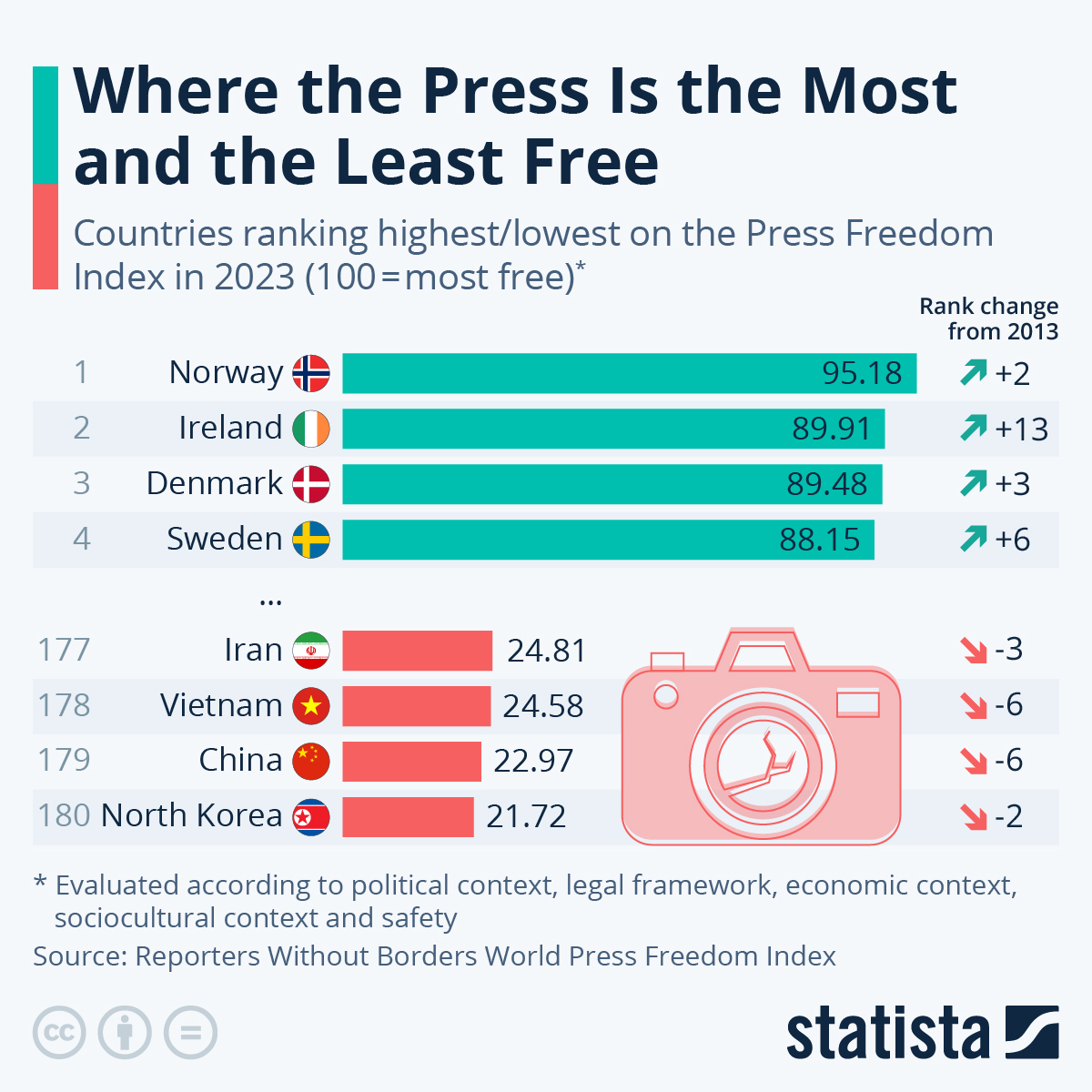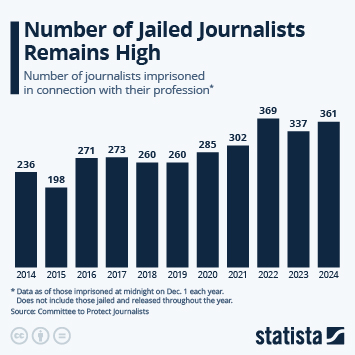Norway, Ireland and Denmark have the highest scores on this year's World Press Freedom Index issued by Reporters Without Borders (RSF), with the first scoring more than 90 points. While the top-ranked countries have changed somewhat compared to 2013, there's a lot less movement in the bottom rungs.
Iran, for example, ranks 177th out of 180. RSF categorizes the events surrounding the death of Mahsa Amini after her arrest by the Guidance Patrol, the country's religious morality police, in September 2022 as the main driver for this year's ranking. In the wake of the ongoing protests, around 70 journalists were arrested and numerous Iranian media professionals living abroad were harassed on social media.
While countries like North Korea, China or Iran have always been among or around the bottom 20 in the past, the number of countries losing the classification of having "good" press freedom compared to around ten years ago is a cause for concern. In 2013, 25 countries scored between 85 and 100 index points, while in 2022, only eight qualified for this bracket. For example, liberal democracy poster children like the United Kingdom, the United States or Germany only managed to get a "satisfactory" rating.
This analysis comes with one important caveat. The index only portrays the level of freedom journalists and media workers enjoy in their corresponding countries and doesn't indicate the quality or quantity of the connected outlets.
The World Press Freedom Index is based on an annual questionnaire conducted among journalists and media workers. It covers five indicators across over 100 questions: political context (e.g. media autonomy), legal framework (e.g. ability to work without censorship), economic context (e.g. corruption and favoritism), sociocultural context (e.g. attacks on the press based on gender, class, ethnicity etc.) and safety (e.g. bodily harm).





















